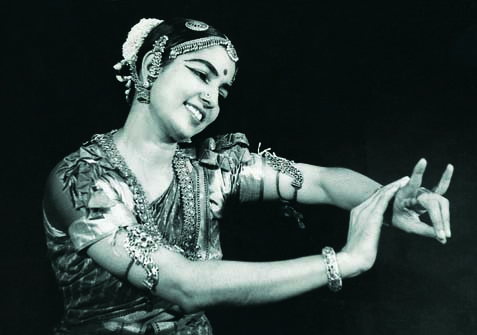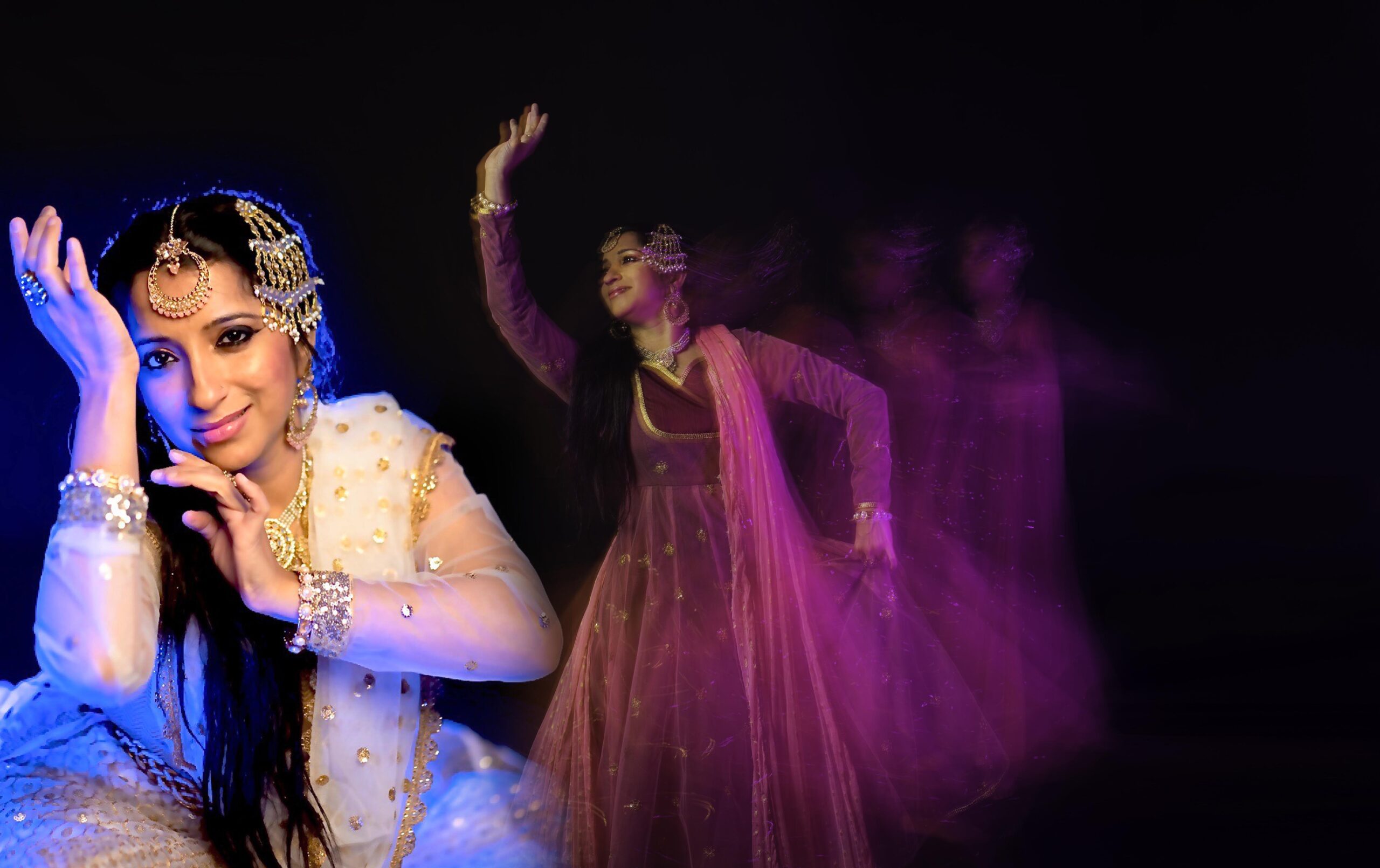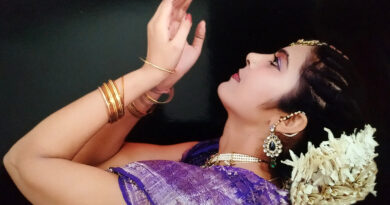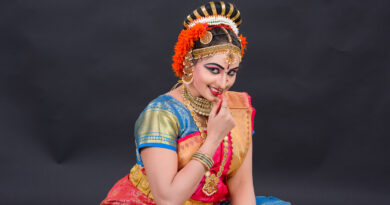The Sun never sets in Rukmini’s Empire
Rukmini’s reformed style of Bharatanatyam is performed at any point of time in the world.
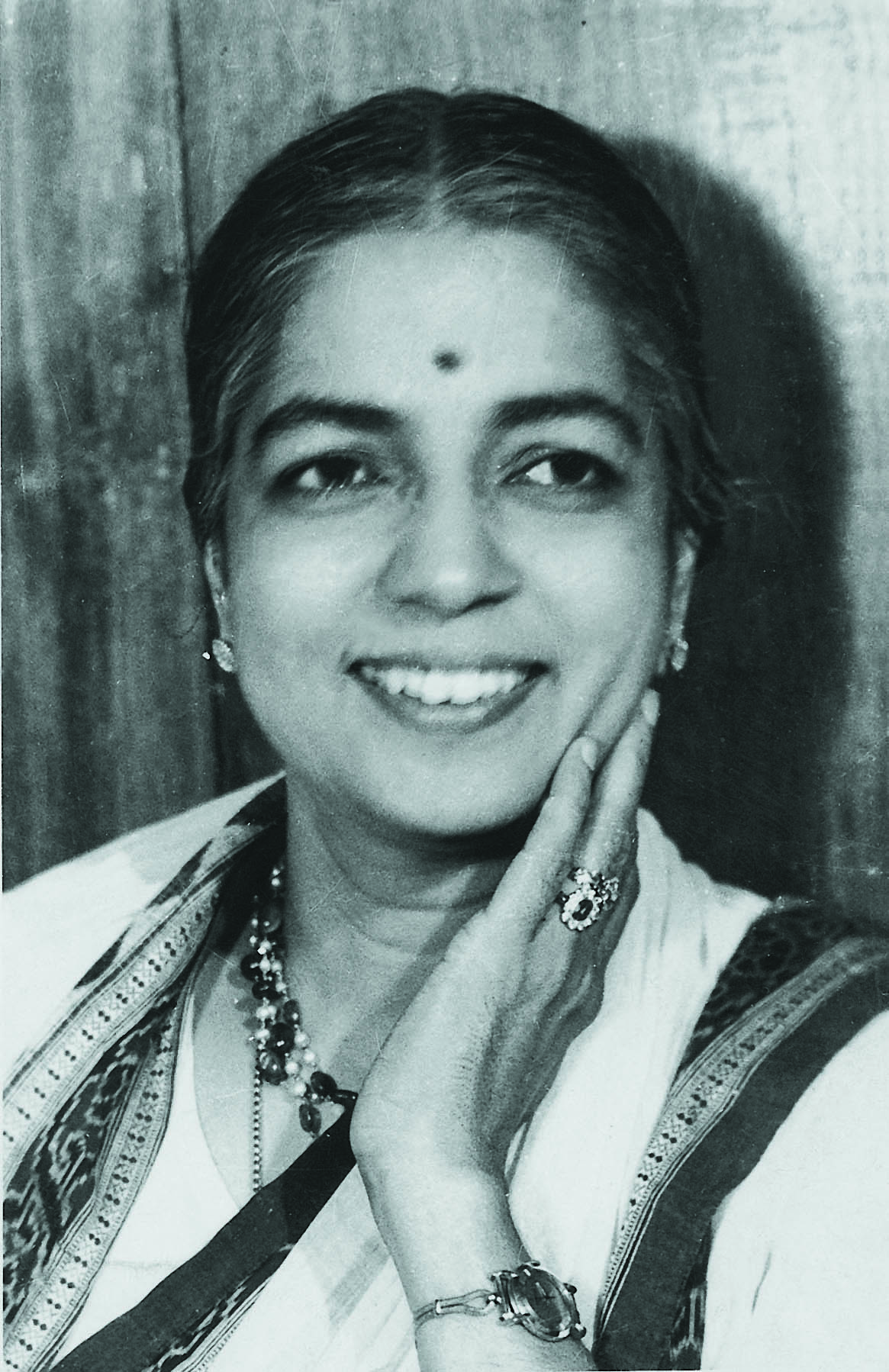
It is said by the almighty that, ‘Birth is a boon, death is a curse; but the purpose of life is to end gracefully and stand memorable for one’s good deeds.’ which means one can be immortal through his or her contributions to the land they lived on and add value to it with their work making their life meaningful with a purpose.
In the 80’s era of life; learning in the life of an Indian women, usually starts from the kinder age and finishes in late twenties due to the fact that by this time an Indian female enters in to the married life and by default her priorities and focus shift on to the family responsibilities; sacrificing her time and energy to the family solely. However, Rukmini Devi Arundale was one such woman with staunch belief, immense self confidence and dedication. She believed that a woman can pursue anything she aspires in life even after marriage, proving it literally with her strong will to learn the dance and create remarkable reforms in Bharatanatyam Art form in the field of Indian Classical dance.
At the age of 26, Rukmini Devi Arundale started as a kindergartener in the field of Bharatanatyam and finally left a bench mark a styled of her own with valid and permitted reforms without tampering the originality of the Bharatanatyam dance form. She incorporated the styles and moments of both ballet and ‘sadari attam’ in her style of reformation of Bharatanatyam as a trade mark. Though a many individuals opined differently regarding Rukmini devi’s style of Bharatanatyam performance.
With her sheer dedication and enthusiasm of learning, today, Mrs. Rukmini Devi Arundale is known as the ‘mother’ of Bharatanatyam dance form of Indian Art and Culture (Classical dances) for her peculiar reformations in the dance form.
As rosy as it appears, Rukmini Devi also had to undergo many hardships throughout her dancing journey paying it a cost by dedication and sacrifice for establishing and spreading the art form.
We ‘The Dance India’ team pay an incredible tribute to a great person, Mrs. Rukmini Devi Arundale through our cover story feature; crediting her life, dance journey and various chronicles from her disciples and contemporaries’ to our magazine readers, dance fraternity members, art lovers and folks.
Rukmini Devi flourished Bharatanatyam to a Divine State
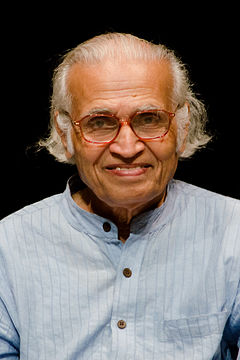
Be your own kind of beautiful, goes the famous quote which aptly suits Rukmini Devi Arundale, founder of the Kalakshetra dance school in Madras. In Rukmini Devi Arundale’s case, her multifaceted, splendid, radiant beauty is not just a joyous memory, but an abiding and passionate devotion for thousands of lives which were touched by her.
Rukmini Devi Arundale was a visionary and a renaissance woman, who restored the glory of Bharatanatyam dance form, establishing Kalakshetra Academy for dance and music, thereby institutionalizing dance. She was fortunate to enlist support from the great traditional musicians and Gurus of the time. On a ship, Rukmini Devi met legendary Russian ballerina ANNA PAVLOVA who taught her classical ballet, but advised her to learn Indian classical dance, which upon return she studied concentrated. Dance was till then looked down upon as an art performed by ‘women of ill fame’ but Rukmini Devi’s bold step changed the course of Bharatanatyam.
According to her, Bharatanatyam is the purest style of dance form and a composite art. It is at the same time the art of the stage, drama, music, poetry, color and rhythm. Its keynote is the dance which includes all the arts but whose message is not merely to the senses, and through them to a purely external enjoyment, but is to the soul of the dancer and of the perceiver. Because of this message, Bharatanatyam is an art that is meant primarily for spiritual expression.
On her views of the mission accomplishment, she said “I don’t think I have completely succeeded. The trends in our country have been going in the opposite direction. We still have to educate people in the fundamentals. It is true that hundreds of our students who have come out of Kalakshetra have really benefited. But then it is easier to destroy than to build. I came into the arts only to help India. My juniors and students are still well-known dancers, here and abroad.”
However, Rukmini Devi Arundale had succeeded in eschewing all the lower types of Shringara Rasa (the erotic mood) and made dance dignified. In years since, Bharatanatyam has become a respected religious art form practiced by thousands of Hindu women and men not only in India but worldwide. Over 600 students have graduated from Kalakshetra, many of them to become great and famous dancers.
Rukmini’s strategy was reinforced by composing her own dance dramas based on various Hindu scriptures and epics. A strict code of purity is enforced at the school and a fifteen minute prayer held before any dance can begin.
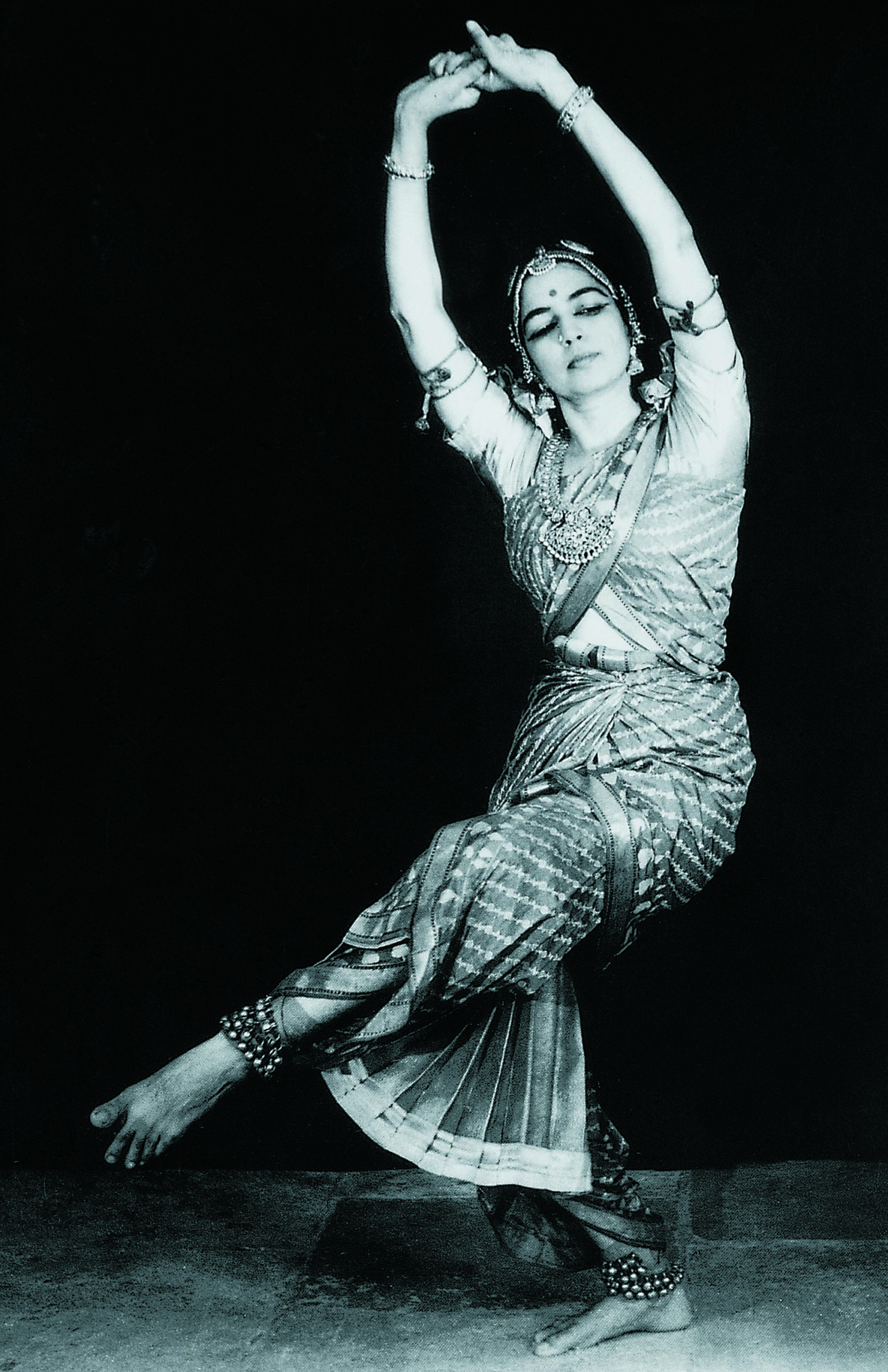
She believes that, Bharatanatyam is a vehicle for all the emotions, but its message is to transcend above the lower and not to lower the higher. This form of dance is a course, intended to portray all the characters of Mahabharata, Ramayana, the Puranas and so on.
Rukmini Devi asserts that if Bharatanatyam is to be rightly interpreted; it involves understanding of the other arts, particularly of music. A dancer whose inspiration comes from music is very different from one who does not understand music. Bharatanatyam has many vehicles of expression: the Movement of the Limbs, the Language of Gesture or Hastas, Tala, Rhytym, etc.. as executed by the feet, poetry as sung by the musicians and the dancer. But most important of all is Bhava or expression. Very often people think Bhava means facial expressions alone. This is a very narrow view, for Bhava it is the outer mode of inner expression. The inner experience is intense and an uplifting emotion.
India is rich not only in stories that actually express every kind of human experience. Therefore, in order to portray the emotions and actions of all these characters, one must not only understand Gods and Goddesses, but Humanity as a whole. Gods and Goddesses are human, their actions are human, their thoughts are human, their emotions are human but they are also superhuman — Divine. They are divine because through human experience they can show the divinity of man and the way to transcend our limitations. While Krishna steals butter from the Gopis like any other child might do, he at the same time gives us the beauty of the divine play and can charm us into the fantasies of the spiritual life. Bharatanatyam is meant to do the same thing, for, through it, we transcend the limitations of the physical. We dance with our bodies but we finally forget them and transform them. We dance the lives of Gods and Goddesses, but as we do this we seek to transcend the lower. Humanity must become Divine, as divinity becomes human. Bharatanatyam decayed because this truth was forgotten.
Today this dance is popular but unfortunately, the spiritual meaning and philosophy of which it is the vehicle are not understood. We may dance like Gods and Goddesses but the devotion towards them that existed in the old days has ceased and therefore Gods and Goddesses on the stage tend to become coarse human beings.
Rukmini Devi did more for Bharatnatyam dance form than any single individual. She indeed succeeded in giving dance and Bharatnatyam a place of pride in India’s national narrative. Originally known as Sadir, the Indian classical dance form of Bharatnatyam owes its current name, to E. Krishna Iyer and Rukmini Devi Arundale who has been instrumental in modifying mainly the Pandanallur style of Bharathanatyam and bringing it to the global attention, and removing the extraneous Srinagar and erotic elements from the dance, which were the legacy of its Devadasi association in the past, thereby raising it to the status of Puritan art form.
The Wonder Lady of the Century: Rukminidevi Arundale
A Beacon Light for Generations To Come – VP. Dhananjayans
By : Naatyaachaarya V.P.Dhananjayan, one of the prime students of Rukminidevi – a true torch bearer of this wonder woman of the century.)
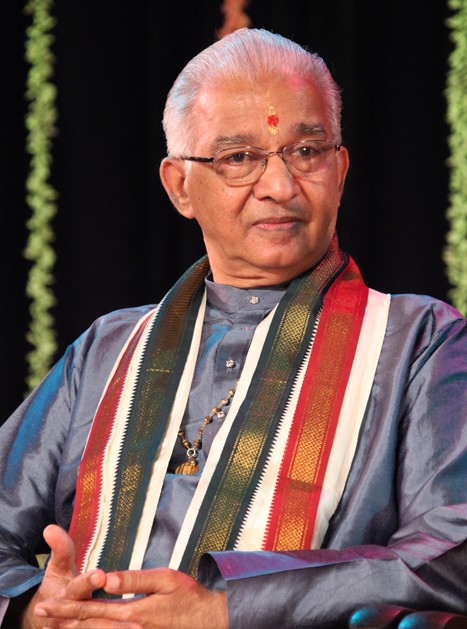
A rare phenomenon in womanhood, a school dropout with academic excellence, who almost made to the highest office (Rashtrapathi Bhavan) of the country, an orator with amazing English vocabulary and attractive personality, Rukminidevi Arundale is a wonder woman of the century. Her glorious years of life were from 1904 to 1986, a leap year born exemplary woman of substance.
“Pithaa rakshahti kaumaare
Bhartha rakshthi yawwane
Puthro rakshathi vardhakye
Na Stree swaathantrya marhathi ”
(Father protects in childhood (until marriage)
Husband takes care in youth (marriage and after)
Children take care and protect during old age
So, women need no independency)
This old saying in Sanskrit varies with positive and negative interpretations. However, the actual essence of the connotation and its deeper meaning is very positive, which mean that, ‘women at any time should be protected by the society’.
Our epics, mythologies and history have abundant stories with evidences to prove that ‘Bhaarat Naari’ were well respected and protected, yet there are incidents of humiliations they suffered on account of male chauvinism. Post independence from our invaders, a drastic attitude change was visible within our own society. Until then there was no question of atrocities on women, and they did survive equally with their counterpart. One such example was Rukminidevi Arundale –a beacon light for generations to come.
Rukminidevi Arundale was a Bhaarat Naari, a woman of substance did not believe in formal school academic education, but believed that education is the real sense of refining oneself with discipline, devotion and dedication. She often quotes “Academic degree or education without character is body without head”
A beacon of light guiding a nation’s cultural ethos where art and culture are the inseparable aspects of human life and art foster and nurture the ‘sanskaar’ (culture) of men and women for a happy life of beauty without vulgarity in thoughts and actions.
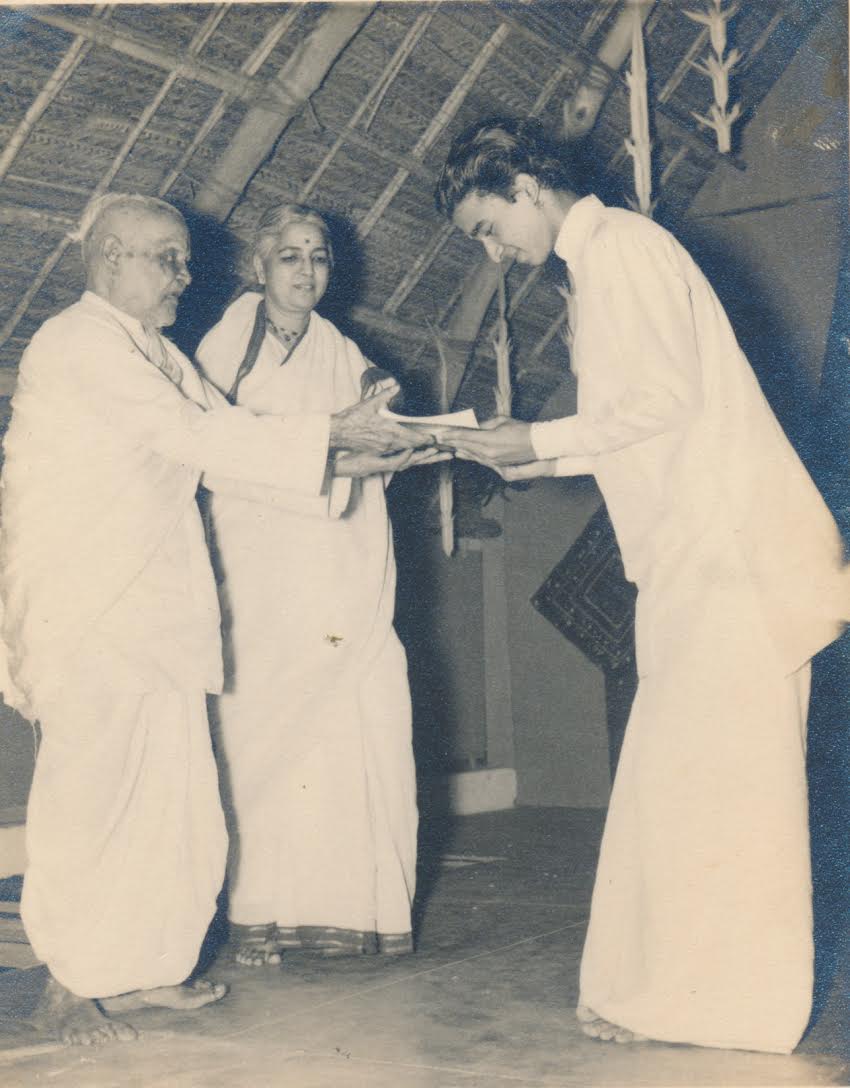
Rukminidevi did not believe in feminist liberation theory or such movement, she had no problem of independence, a free woman of individuality and freedom of thoughts. She achieved what many men could not achieve.
Realizing the power of Naatya –the essence of real education inculcating the physical, mental and spiritual discipline, she envisaged an art integrated educational system. This system would see an independent Bhaaratam justifying the real meaning of the country’s name left behind by the great saints of the past.
Kalakshetra the Gurukulam (residential learning centre) was the result of her ‘quest for enlightenment’. Educate, enlighten and entertain or relaxation are the purpose of Naatya, with which she modelled her mission and vision for future generation of the country who are being influenced with alien culture, that does not suit the environment of Aarya-Bhaaratam.
Attached to the Theosophical campus in Adyar, an outskirt of Madras Presidency literally turned into an ideal place of worship to people, where ‘Kalakshetra’ became a center of pilgrimage. A place of learning is a temple of worship and Aachaaryas are the venerable priests of the Gods’ abode and that was how Rukminidevi‘s dream or vision became a reality. She was very lucky enough to have had a galaxy of dedicated workers like Sankara Menon, Dr. Padmasani and several stalwarts in diverse fields that contributed much to the development of the centre, which ultimately had to shift to Thiruvanmiyur.
As inmates of the Gurukulam, she gave us the task of rebuilding a monumental temple of arts on a sandy beach. That was also her vision to make all her protégé an integral part of Kalakshetra’s growth as an international centre for art which nurtured a true ‘Bharateeya Sanskaar’.
She was an absolute ‘Bhaarateeya’ persona in her thoughts and actions, though married to a westerner and mostly mingled with Europeans, who were also steeped in the eastern philosophy and culture. She took the best of west to better our education in a holistic manner.
Rukminidevi was neither an activist; nor she a feminist, she believed in a natural biological strength of either sex. Equality among human beings is a matter of individual intelligence and application. Many a time the suppression of women in society came due to certain compulsions and practice of customs which were not quite congenial to a progressive society.
She came to the world at the right time and right place, as all our scriptures promulgated, can be similar to an ‘Avataara Naari’. She is a wonder woman of the century who left a large legacy, unimaginable to our generation.
The years 1950 to 1975, may be marked as the golden period of Kalakshetra with all of us, her best of students closely associated and her work of art blossomed in the garden of everlasting creativity. She was able to instil in her students, the beauty in art without vulgarity by her creations which are the monumental legacy, attracting true art connoisseurs to repeatedly watch, with nostalgic memories of that golden period. She lives through us who uphold the values of her vision and carry it forward to the next generation.
As a nominated Member of Parliament, she did much more than the elected members without expecting any reward or award. Taking up the cause of Animal welfare and propagating the ideals of Buddha and Mahatma Gandhi ‘Ahimsa paramo dharma’ (Non-violence is the greatest virtue).
After independence our educational system has gone awry, lost direction of whether to follow European liberal system or Bhaarateeya disciplinary method which resulted in a chaotic system without disciple, direction and decorum. The atrocities on women are the wrong undisciplined educational system where we failed to inculcate good character and conduct.
Rukminidevi through her Art Center and Academic schools gave a comprehensive art integrated education moulding several world-class citizens.
———————————
About Kalakshetra: Overview
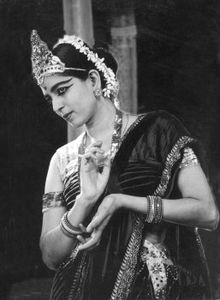
Kalakshetra, as the name suggests, is a centre for artistic endeavor. Founded in 1936 by the vibrant visionary Rukmini Devi Arundale, the Institution stands testimony to her dream of creating a space where the essence of Indian thought would find expression through artistic education, where young minds would rediscover the beauty of India’s rich traditions and become worthy ambassadors of her inherent culture.
Spread over almost 100 acres by the seashore in Chennai, the Kalakshetra Foundation, as it is known today includes its flagship unit the Rukmini Devi college of Fine Arts, two large educational institutions – The Besant Theosophical Higher secondary School and the Besant Arundale Senior Secondary school, and the Craft Education and Research Centre which also houses the weaving unit – all envisioned and designed with the style and proportion of Indian aesthetics. Over the years Kalakshetra has become a vital centre for the study and performance of fine arts, an institute that has produced distinguished artists known for their distinctive style. The Kalakshetra Foundation is recognized by the Government of India as an Institute of National Importance
Founder: Rukmini Devi Arundale (1904 – 1986)
“I was very intuitive from an early age. I responded to people just as I responded to art – through an inner feeling which is difficult to explain. I just felt some things were right and some were not. . .”
Born in the temple town of Madurai, Tamil Nadu on the 29th of February 1904, Rukmini Devi was one of eight siblings. Her father Neelakantha Sastry was an engineer and the family moved from place to place as his work demanded. She enjoyed a happy childhood as she wrote in a short biographical note, “I have had the fortune of having the most understanding and loving parents. No discipline was imposed on us, but traditional values and correct behavior we learnt automatically by watching them. . . Father was . . . very forward thinking and disliked many of the narrow prejudices, the caste distinctions, animal sacrifices, etc. which were part of our religion in those days”.
These values were to leave a deep impression on all their children. It was her father who initiated her along with her siblings into the Theosophical Society. As Rukmini Devi herself said, “He liked the teachings of the Theosophists which freed religion from superstition. . .” And after he retired, Neelakantha Sastry bought land next to the Theosophical Society estate in Adyar and moved there with his family.
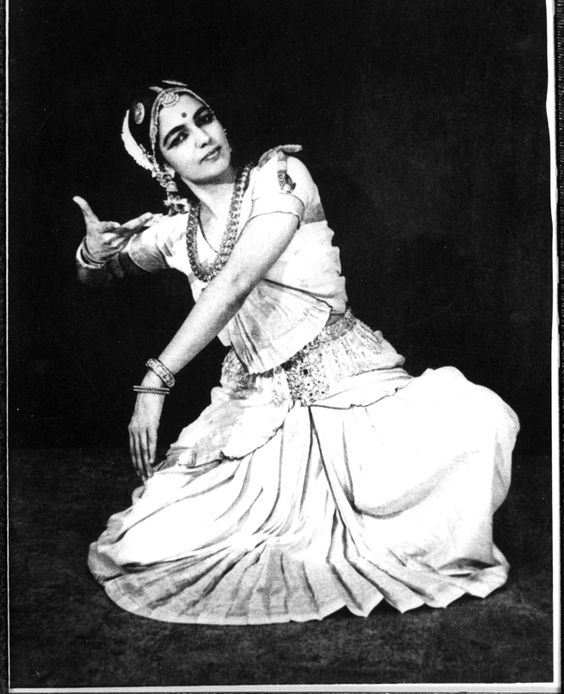
Her childhood was spent in the environment of the Theosophical Society, growing under the influence of inspiring people like Dr. Annie Besant, Dr. George Sydney Arundale, C W Leadbeater and other thinkers and theosophists of the time. After the death of her father, the family grew close to Dr. George Arundale, a distinguished Theosophist and an associate of Dr.Annie Besant.
But when Dr. Arundale, her senior by 24 years proposed to marry the stunningly beautiful and charismatic 16 year old Rukmini, the orthodoxy of Madras was shocked and vehement in their protest. It was to be the first of many storms in this courageous woman’s life – all of which she would weather with conviction and strength.
In 1920, she married Dr. Arundale with the blessings of Dr. Annie Besant and with the approval and support of her mother and brothers. Though they faced a great deal of opposition from a conservative society in Madras, they stayed firm in their resolve. In the years that followed, they worked together closely in education and the arts, inspiring and complementing each other in a manner that made their marriage seem ordained by a higher purpose.
Being with Dr. Arundale changed Rukmini Devi’s life. She began to travel widely with her husband on Theosophical work. She also became very close to Dr. Annie Besant and helped her with her work. Although she was very young at that time, she observed and absorbed a great deal of the values and the concerns of those who worked with Dr.Besant for the freedom of India and for the revival of India’s cultural heritage. (Dr. Arundale went on to become the President of the Theosophical Society after Dr. Besant’s passing and Rukmini Devi herself was an active member of the Theosophical movement).
It was on one of her travels that Rukmini Devi met the famed ballerina, Anna Pavlova, at Covent Gardens, London. What she experienced that evening was to transform the course of the young woman’s life. She saw Pavlova perform again in Bombay, the East Indies and Australia. But it was her chance meeting with the ballerina on a ship to Australia that was to initiate her into this “fascinating world of movement and expression” as she would write later.
Pavlova introduced Rukmini Devi to ballet and had her disciple, Cleo Nordi, give the young woman lessons while on board the ship. Dr. Arundale believed that after this experience, Rukmini Devi was “a changed person.” While Pavlova encouraged Rukmini Devi to learn ballet, she insisted that as an Indian, she should learn the dance of her own country. Thus, it came to be that Rukmini Dev followed the guidance of Pavlova in word and spirit.
Of Pavlova, Rukmini Devi wrote, “She was not beautiful in the ordinary sense but had a great presence on stage and an almost divine grace. That was what made her great. I can never forget her, for she showed me the great possibilities in dance as an art form.”
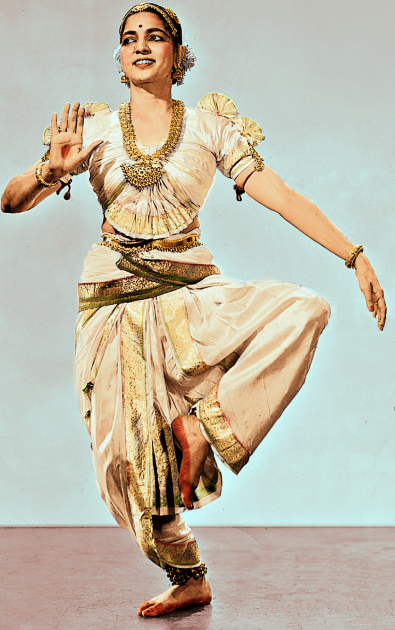
At the Theosophical Society in Adyar, Rukmini Devi often took part in theatrical productions, and later began to create dances and plays. But it seemed a if there was a growing restlessness within her, when she wrote, “I felt dissatisfied and wanted very much to learn Bharata Natya based on the classical music which I loved, and to do something more serious.” She began to attend dance performances and sought out practitioners of the art, and in 1927, Rukmini Devi’s brothers, Yagneswaran and N Sriram took her to see a sadir performance by two sisters. Rukmini Devi believed that through this performance she was “ushered into a new world of rhythmic beauty and meaning.”
She resolved to learn the art from these specialists. Pandanallur Meenakshi Sundaram Pillai was her guru though it has been mentioned that she was initiated into bharatanatyam by Mylapore Gowriammal. Transcending orthodoxy( that believed that girls of “upper caste families must not learn the art of temple harlots”) Rukmini Devi, already in her early thirties, worked tirelessly and with great enthusiasm to understand for herself the artistic spirituality of Indian dance, to learn it in its purest form.
She gave her first performance at the Diamond Jubilee celebrations of the Theosophical Society in 1935. Another time in her life, she was prone to face the vehement through public ridicule as the orthodoxy of Madras threatened to boycott the event. Once more, she weathered the storm with the commitment and resolves she was then becoming known for.
Those who were present in the open-air Adyar Theatre (of the Theosophical Society) on that day in 1935 were mesmerized by the spiritual quality of her dance. A Bishop who attended the performance, wrote that he felt as if he had been “present at a benediction ceremony”, and Sir C V Raman, the Nobel Laureate said, “some of you, I hope – for your sakes all of you – must have been thrilled by what you just witnessed……..grace brought down from the heights of the Himalayas and put on the earth of this platform”. On the occasion, Dr. Arundale, her strongest supporter, introduced the performance and spoke of the spiritual nature of this Indian dance. His speeches between the dances were said to be equally fascinating.
What perhaps was not immediately apparent was the fact that on that day, through her performance Rukmini Devi was creating history – something that would completely change the course of this art. Other than the fact that she had broken shackles of caste and community, it was the first time a dance program was being presented as a stage performance. Also, earlier the accompanying musicians would follow the dancer on stage, moving back and forth with her.
For the first time, Rukmini Devi made them sit on the side of the stage and there was a plain back drop that would enhance the dance being performed (features that we have come to take for granted in a dance performance today). The prevalent seductive costumes and jewelry were changed into aesthetically beautiful ones, inspired by those found in ancient sculpture. She was ushering in a period of renaissance in this art.
But to her, it was not enough that she danced herself, she wanted to find young people who would dedicate themselves along her, to its revival. She was determined to, in her words, “disseminate this beautiful and profound art that had been restricted to a few specialists.” At a point of time when Dr. Besant and Dr. Arundale were working for the political freedom of India, Rukmini Devi believed that a cultural renaissance would be equally meaningful – that a country which was losing its identity would be best served by a revival of its traditional arts.
Kalakshetra was born of these energies:
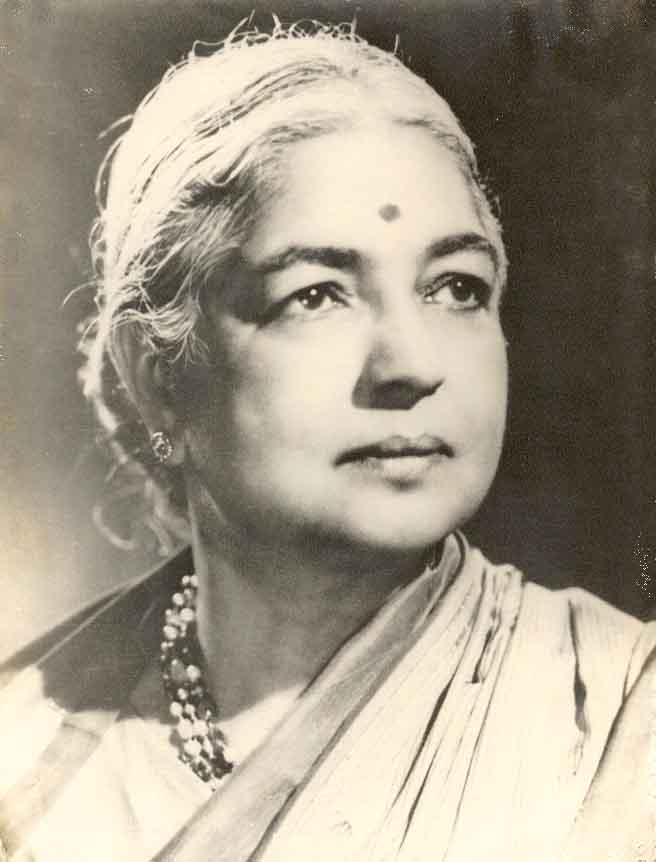
She wrote, “When I think about the events that led to the formation of Kalakshetra, I am more and more convinced that there is a divine destiny which shapes our lives. Many people have said many things about my being a pioneer. I can only say that I did not consciously go after the dance. It was the dance that found me.”
Rukmini Devi was to devote the rest of her life to the institution that she created, funding it through her own resources and through the donations of friends and well-wishers. Dr.Arundale stood firmly by her side, actively working with her as she built her institution with vision and commitment, nurturing the academy through many difficulties. Her innate conviction and grace drew many people from different places and different walks of life to give up what they were doing and join her in her work. Sankara Menon, her most trusted friend, philosopher and guide, educationist Chintamani Trilokekar and his wife kamala Trilokekar, D Padmasisni and her brother M D Mani, scholars like Subramania Sastry, P S Krishnaswamy who deeply believed in Theosophical Education, younger people of that time like A Sarada, S Sarada, Nachiappan, Peter Hoffman and many others were deeply attracted to her spirit and dedicated their whole life to her works.
Other stalwarts of society like K Chandrasekaran, James Cousins and his wife, Sir C V Raman, Narayana Menon, and others supported her in various ways. The list is endless. Her mother Seshammal, sisters Sivakamu and Visalakshi and brothers Yagneswaran and Sriram also gave her their whole hearted support.
However, right from the beginning she understood the centrality of music to the dance. Her deep commitment to pure art and sensitivity to fine nuance drew great musicians like Tiger Varadachariar and his brother, Krishnamachariar, Mysore Vasudevachariar, Budalur Krishnamurthy Sastri, Papanasam Sivan, Veena Sambasiva Iyer along with great dancers like Ambu Panikar, Chandu Pannikar , Mylapore Gowriamal and many others to Kalakshetra. Veena Krishnamacharya captures this sentiment so beautifully in the sahithya of his Natabhairavi thillana (known as Kalakshetra’s trade mark thillana) where he pours his heart out in gratitude to Rukmini Devi “who with great fire and conviction established and nurtured this kshetra for the arts, a tribute to the beauty of Indian aesthetics….. There is no one more compassionate (than you)…. as you have created a haven to protect the beauty of the art and the dignity of the artist”.
At Kalakshetra, she put into practice all the values and instincts for beauty that she had absorbed in her life. Each classroom, each tree that was planted was the measure of her determination to make her institution grow, in the face of many difficulties. After the death of Dr. Arundale in 1945, she went through very hard times, but her strength of will and purposefulness helped her to overcome all the troubles that she faced. Kalakshetra moved to its present location in the 1960s. Despite an acute shortage of funds, Rukmini Devi managed to build simple classrooms and hostels to continue her life’s work.
Such was her dedication and clarity that when, in 1977, the then Prime Minister Moraji Desai, nominated her to become the President of India, she immediately declined the offer. Her response was simple and clear. If she were to become President it would take her away from her work, from Kalakshetra and she could not let that happen as she believed that the art and the institution needed her complete attention.
Kalakshetra was central to Rukmini Devi’s life, but she was absorbed in many other activities as well. She was a highly accomplished orator and travelled the world speaking on art, philosophy and animal welfare.
Deeply sensitive to all life, she was a true champion for the cause of animals. She felt, “the whole animal world is sending out one cry for help which very few human beings are answering. We may not be able to do much but ability comes from desire (to act). We will find the energy and the means if we know how to feel”. As a member of the Rajya Sabha she was instrumental in passing the Prevention of Cruelty to Animals Act. And in 1957 the first World Vegetarian Congress was held in India under her president-ship.
“Animals are my friends and I do not eat my friends” was a line she often repeated, once even at the dinner table of Prime Minister Jawaharlal Nehru. As Chairman of the Animal Welfare Board, she remained involved with its activities, signing papers and working to the very end. She inspired a whole generation of young people around her to give up products tested on animals like shampoos and cosmetics. But her most beautiful message however was in her own life – when she chose not to take medicines for her fatal illness, because many of the drugs used in its treatment were either tested or researched. She bore the pain with the strength of right action and met her end with equanimity. For a lady who was most fond of the two qualities of compassion and beauty, her life was as much a reflection of these qualities as was her passing.
Involved in the revival of crafts, along with the legendary Kamaladevi Chattopadhyay, Rukmini Devi had a passion for traditional South Indian handloom sarees. She was always quick to notice a beautiful saree and equally quick to admonish a student or anyone else who chose to wear something that did not meet her exacting aesthetic! She established the weaving centre in Kalakshetra to help bring back traditional designs, colors and motifs along with traditional weaving practices. Whether it was the six yards of fabric or the 100 acres of land, she was a master architect who designed with the belief that beauty was in the detail, which had to be in tune with the composite (she preferred to use the phrase “in shruti”).
Perhaps the greatest monument to Rukmini Devi is the manner in which the dance she brought out of the shadows has flourished and grown. The rhythms of Bharatanatyam in the Kalakshetra style may be heard on almost every continent on the earth. Equally or sometimes better known are her dance dramas (she composed more than 30 of them) which are still performed with reverence and strict adherence to her choreography. They have, each one of them, retained their freshness and beauty; even sixty years after some of them were created. They are still being performed and retain the power to entrance audiences and to create a sense of the temple on the stage, which was her intention. She brought mythology and lore alive through the finest sensibilities in art – be it in costumes, music, and stagecraft and of course in the dance itself.
Known for her excellent sense of humor (she would laugh till tears rolled down her cheeks!) and deeply affectionate ways, she will be remembered always for her regal, authoritative manner when it came to values of art and life. Theosophists hailed her as the World Mother, to her family in Kalaksherta she is Athai (paternal aunt). But for those who knew her and loved her, one word that could perhaps best capture her spirit is ‘grace’.

